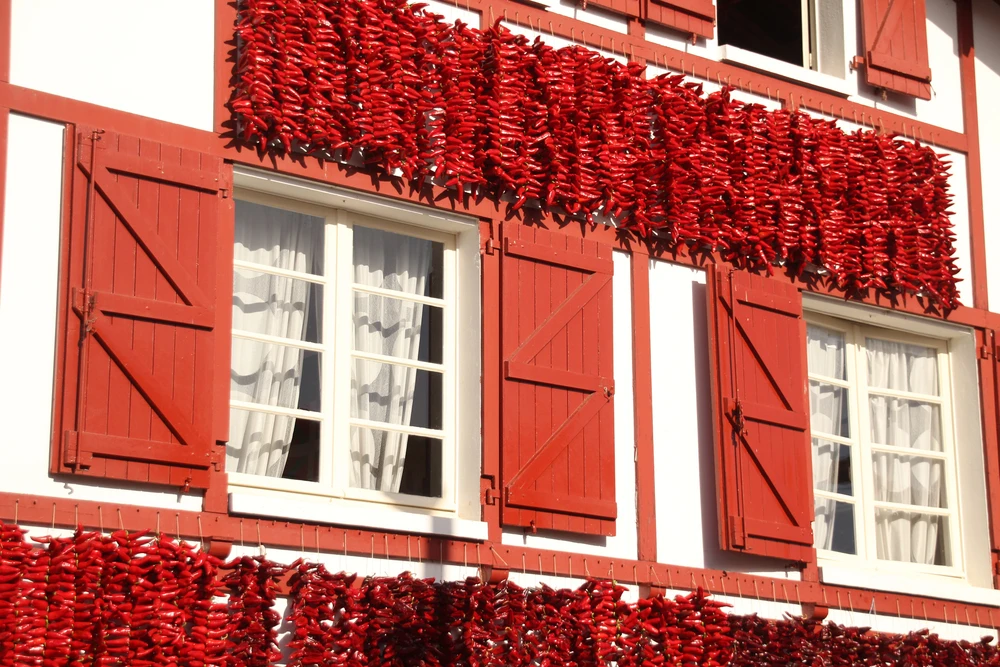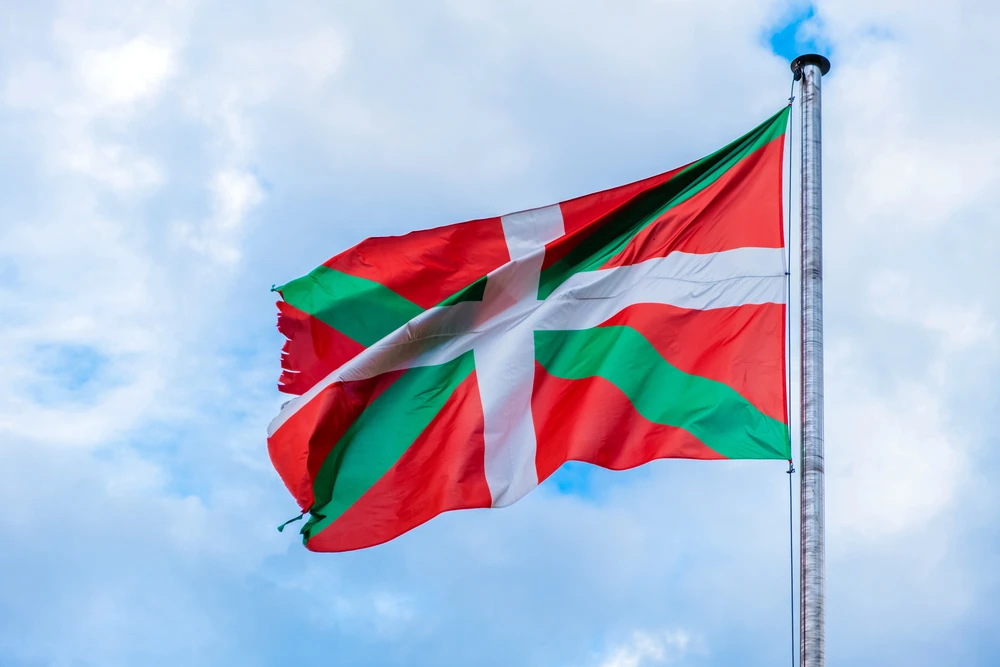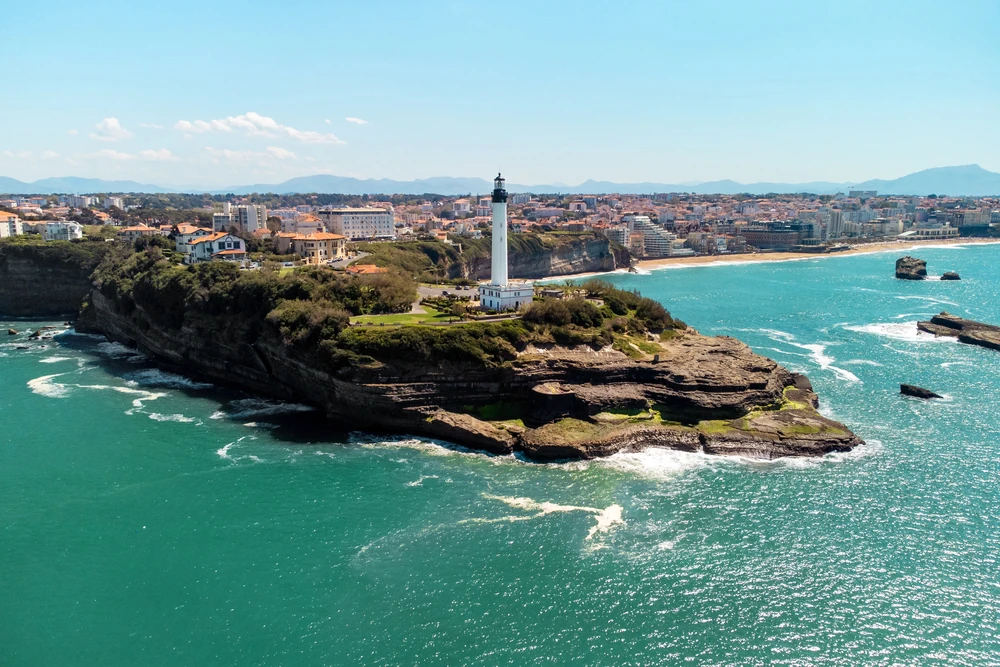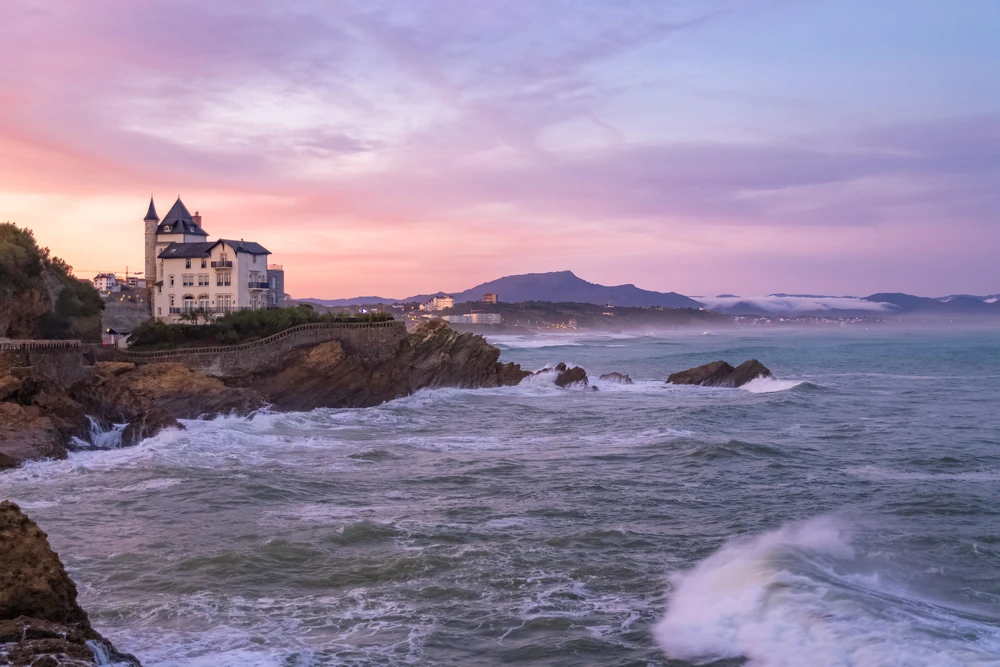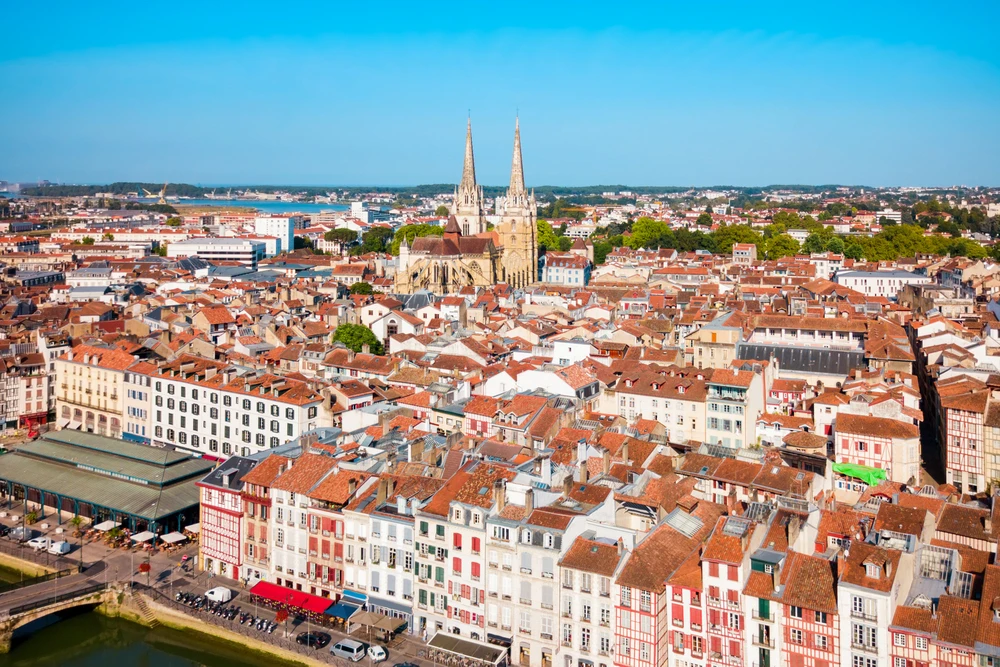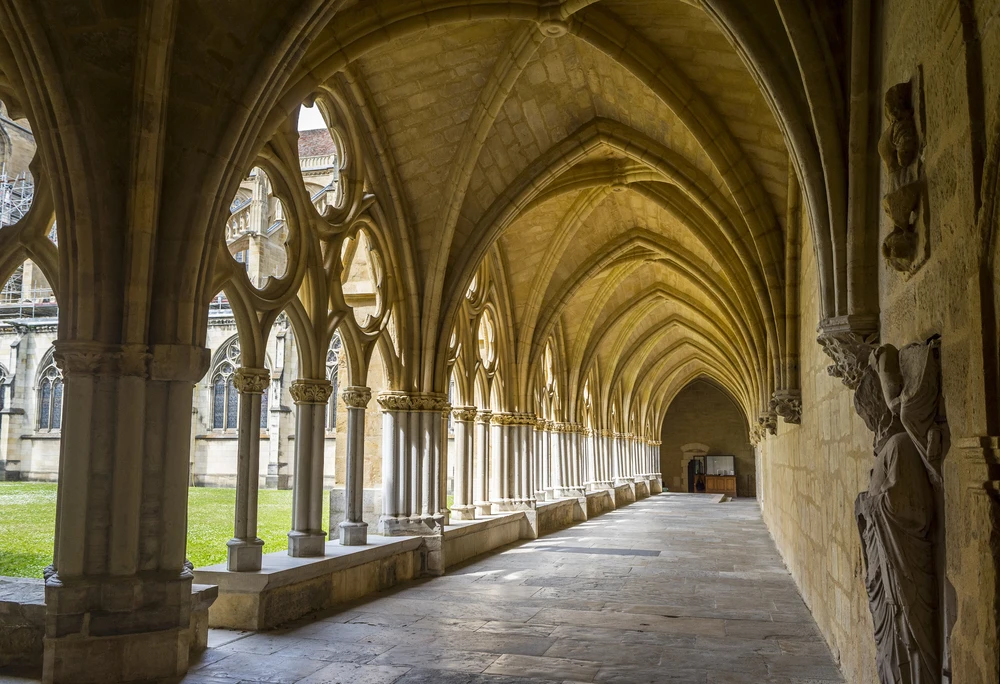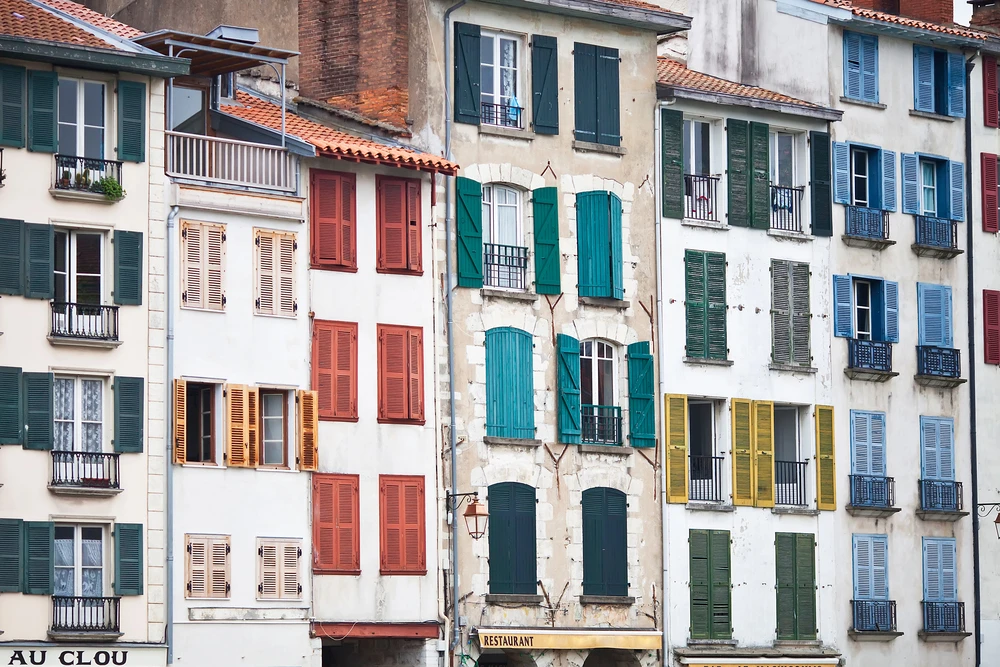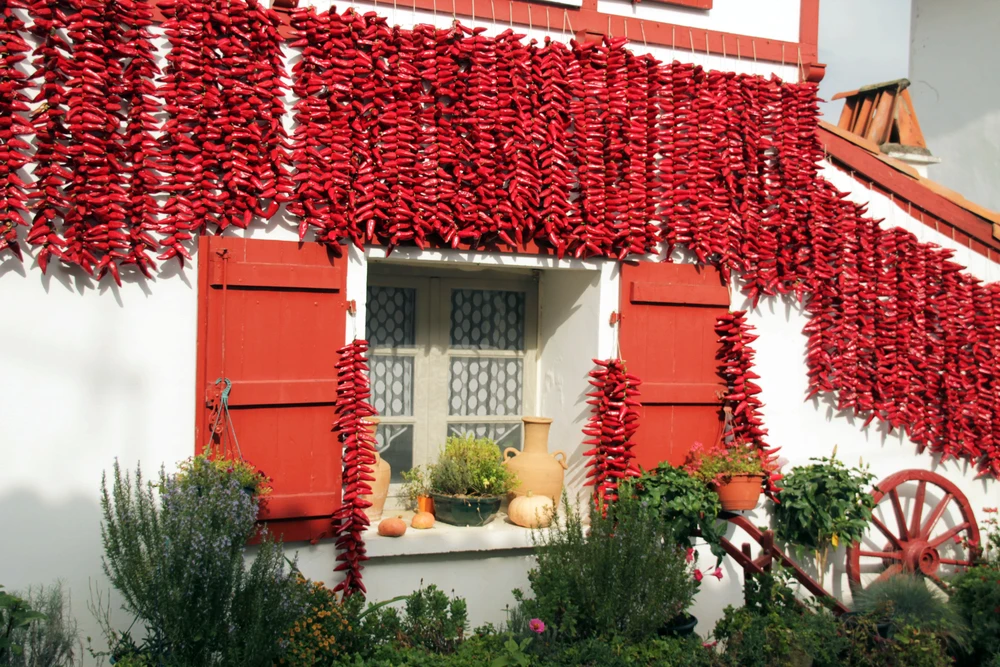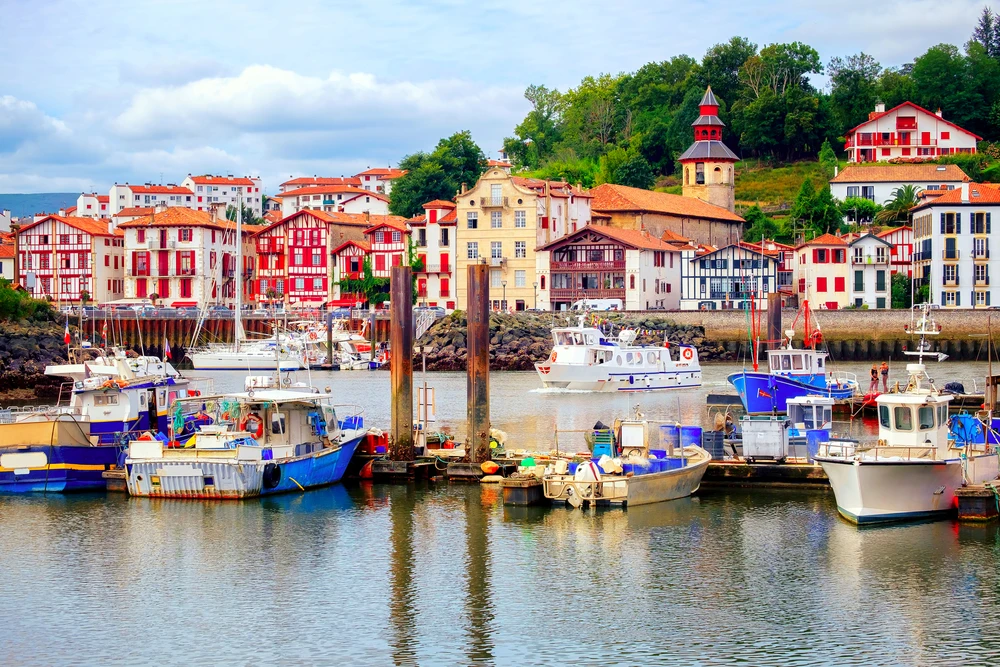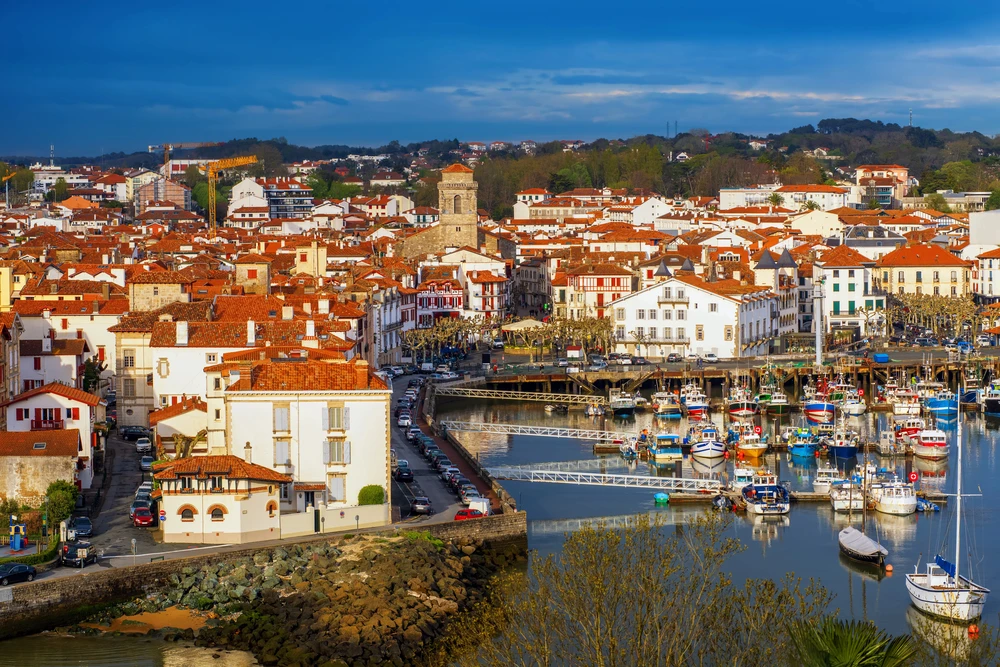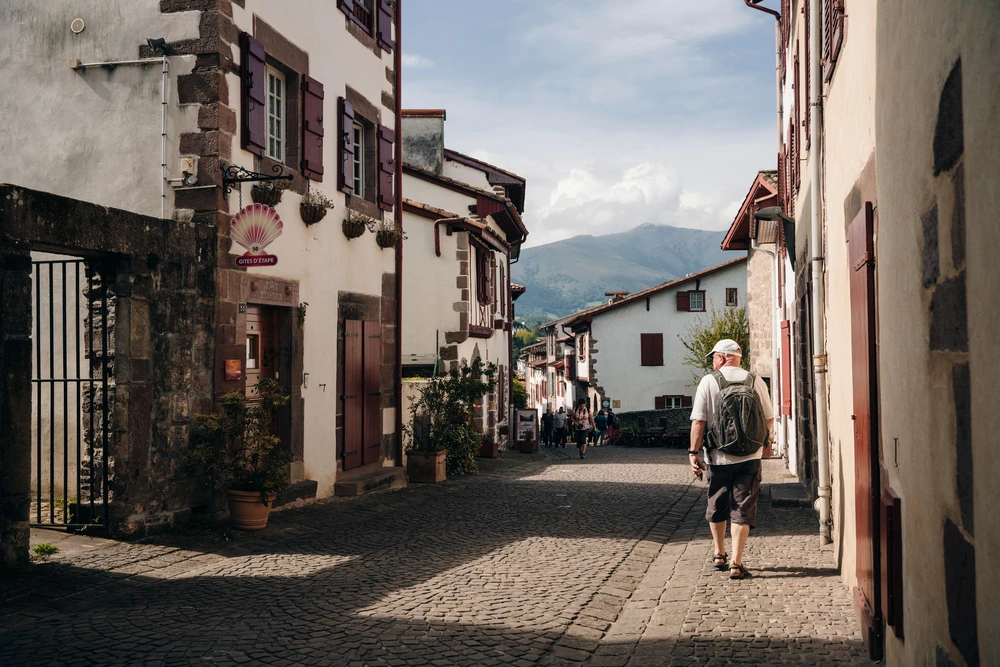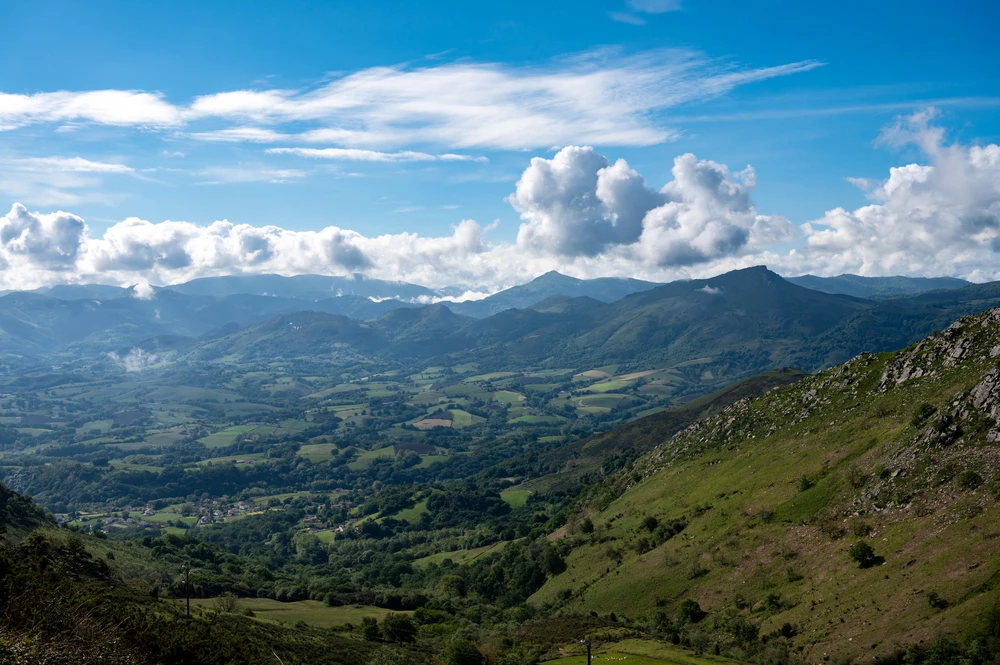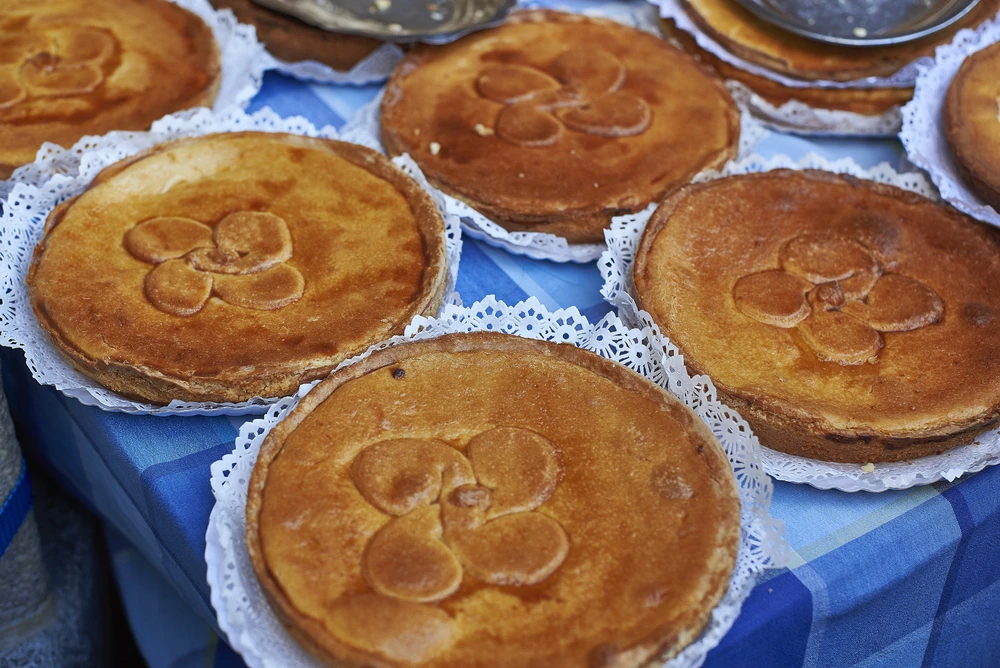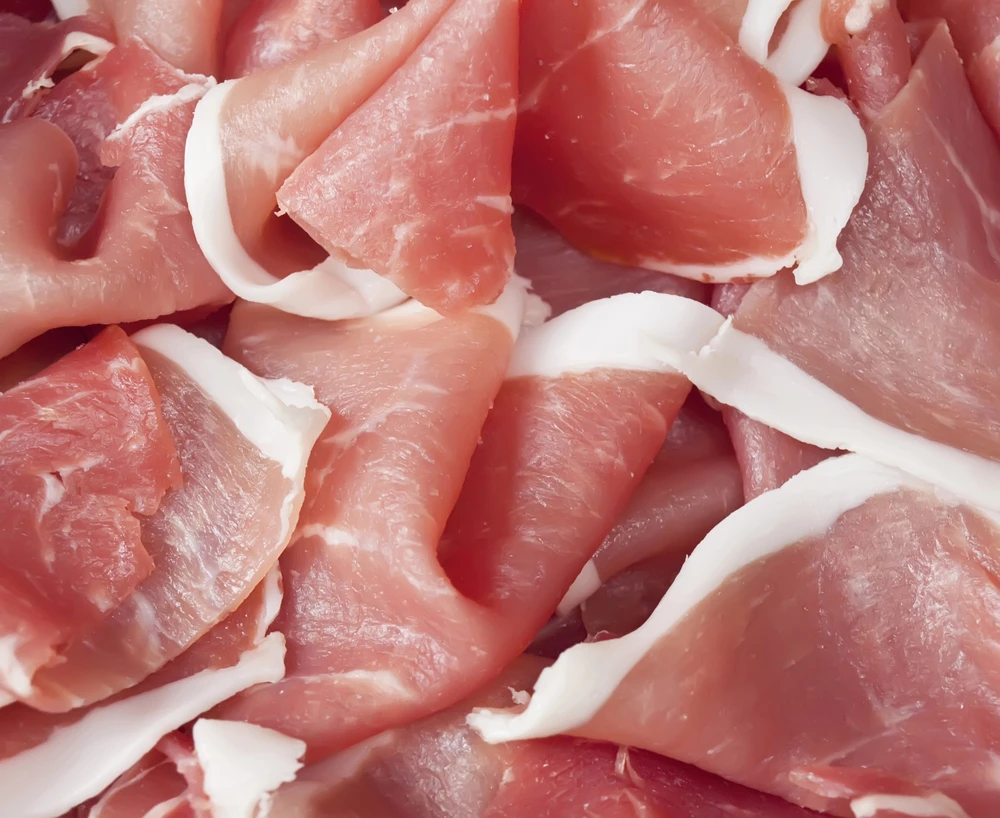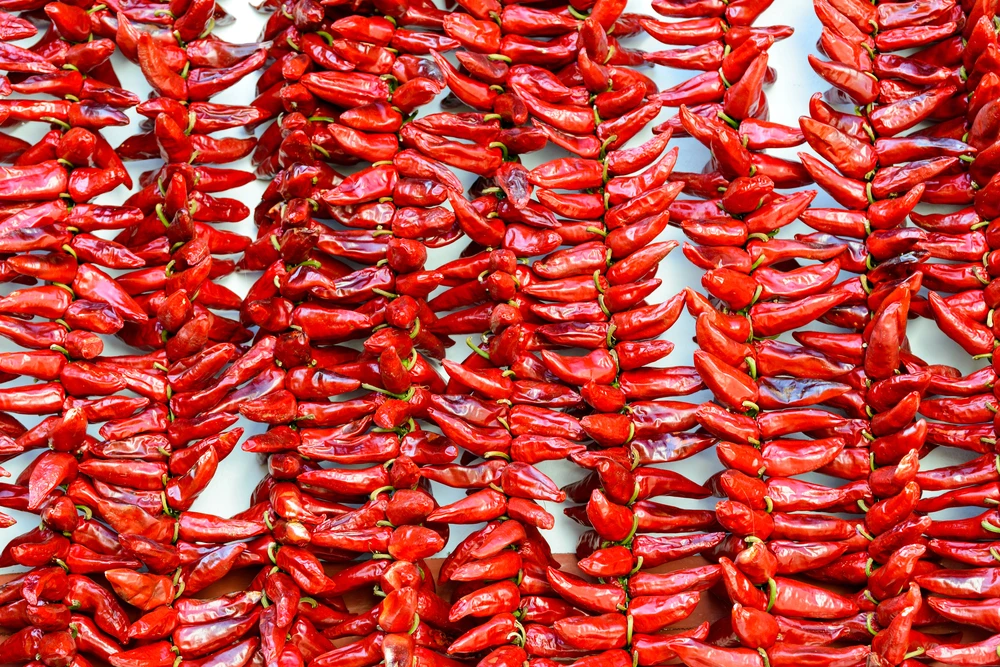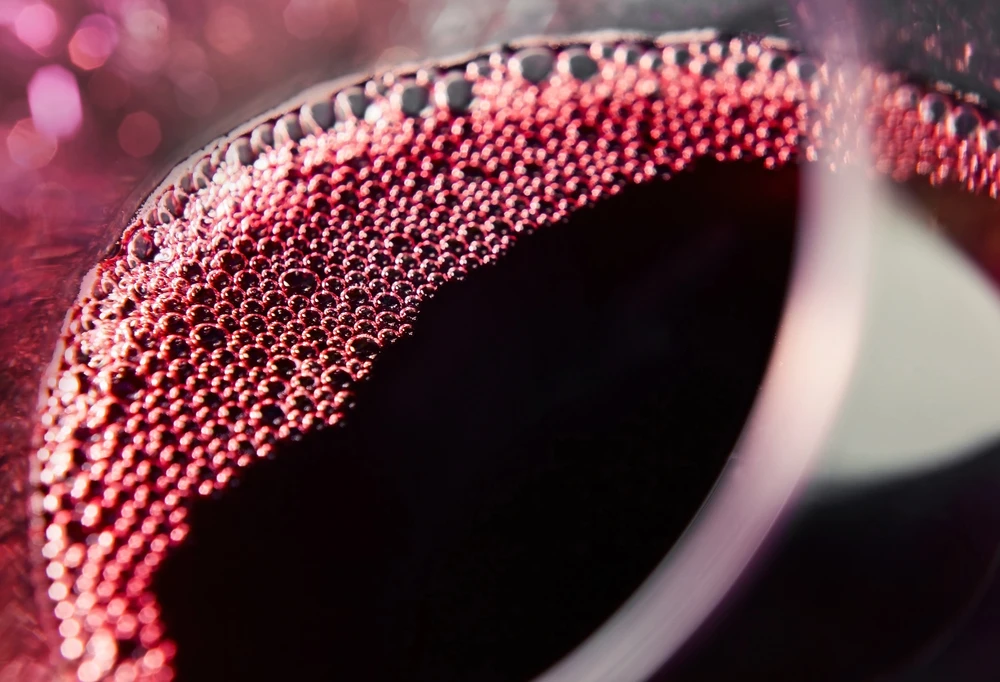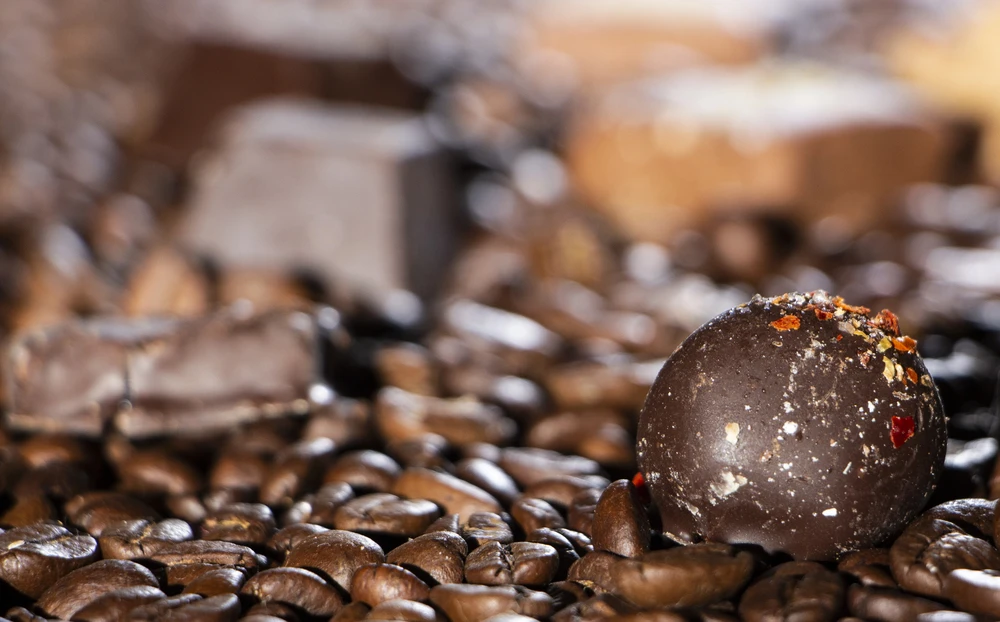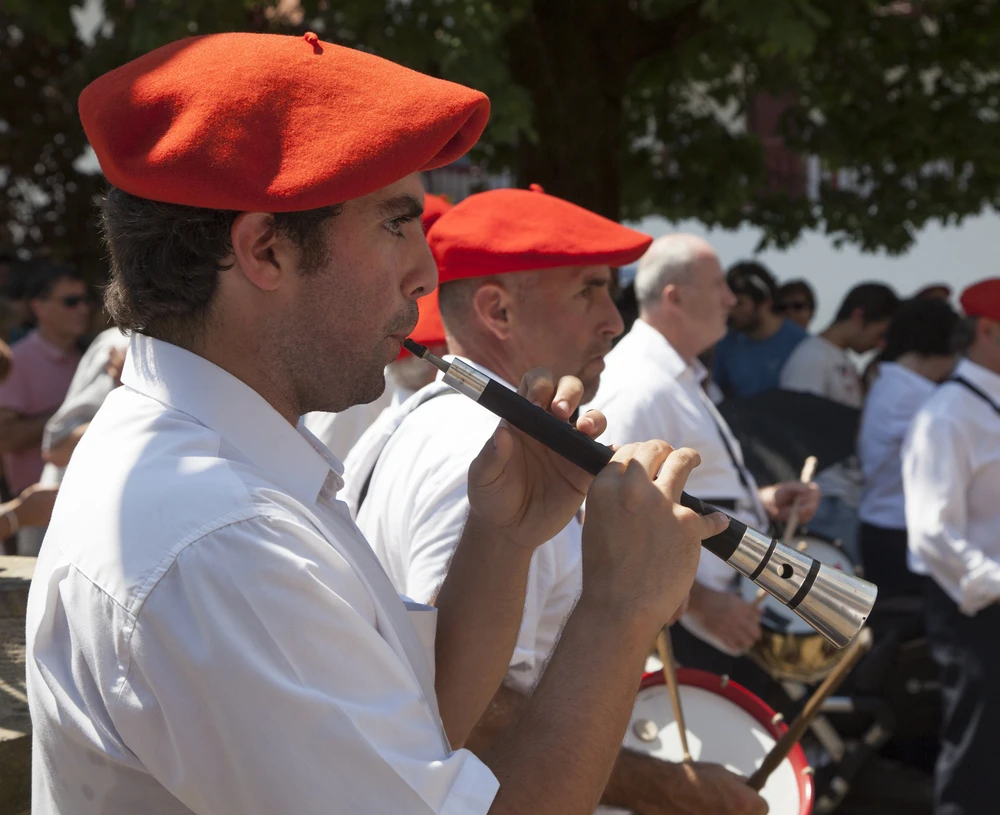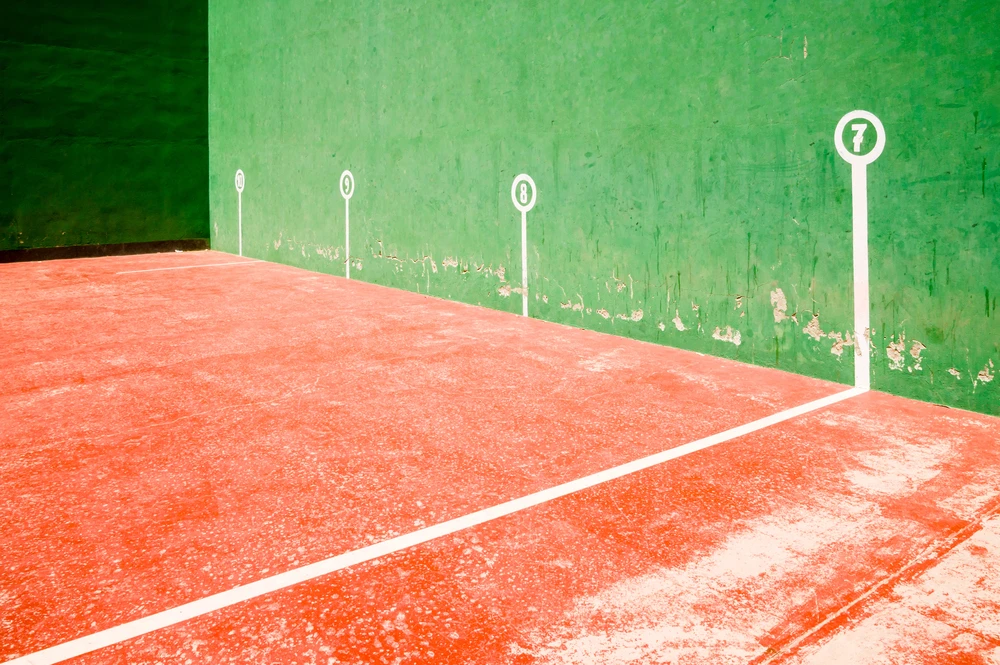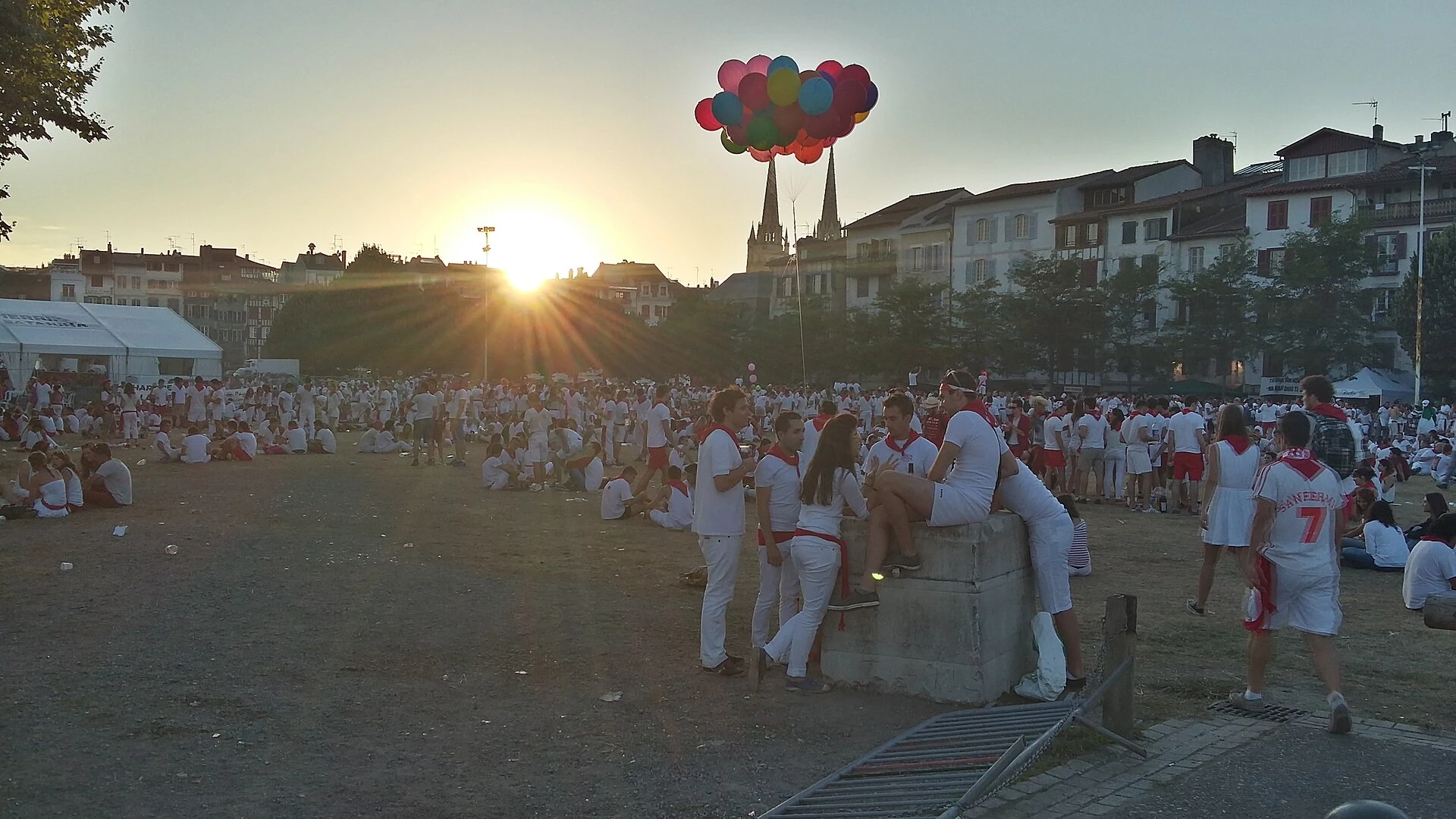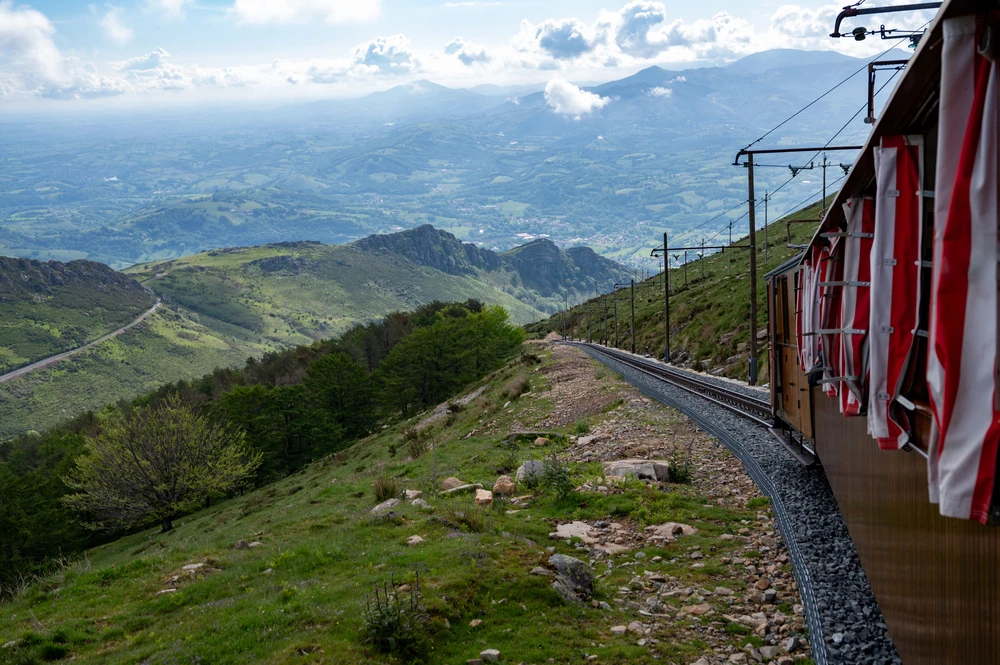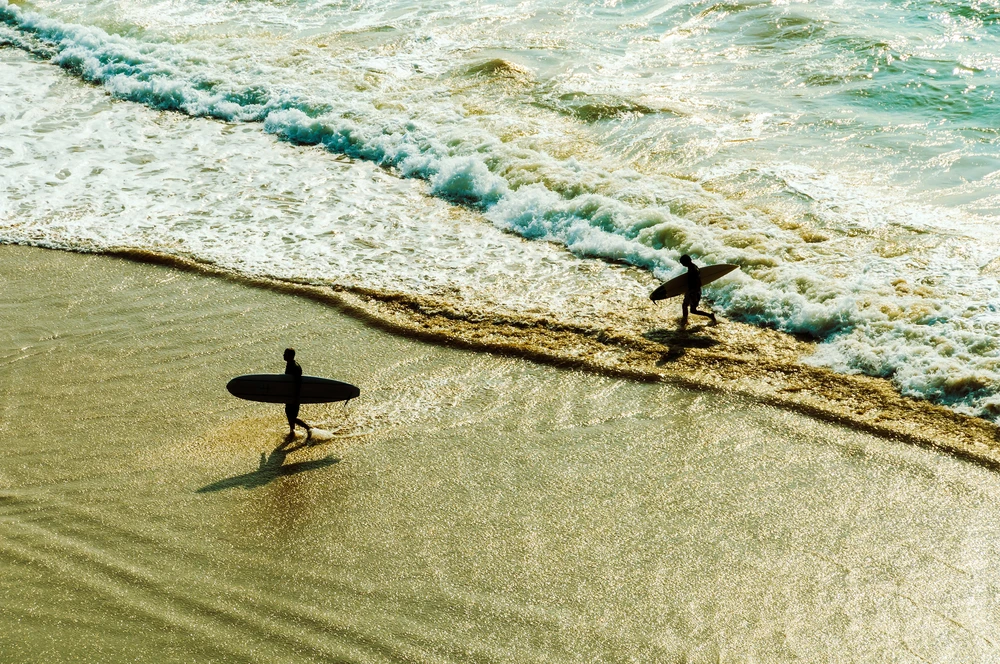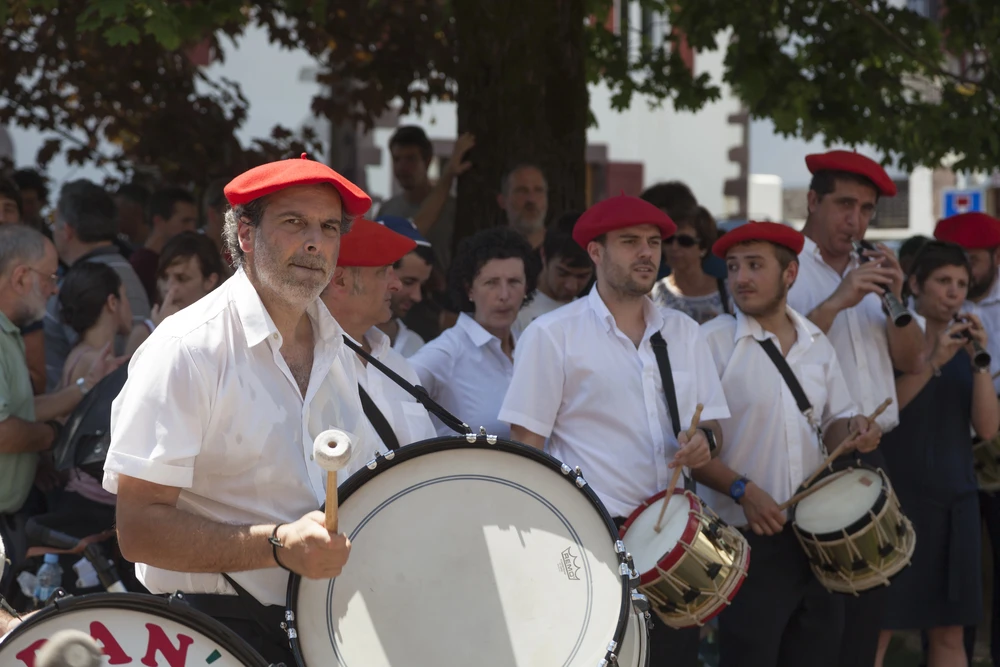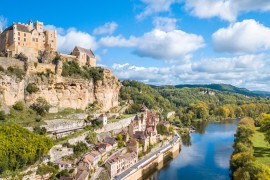🗺 What is the Basque Country?
Located in the extreme south-west of France, the Pays Basque is a historical and cultural territory much older than the modern départements. It spans two countries: part in southwest France (Labourd, Basse-Navarre and Soule) and part in Spain (autonomous communities of the Basque Country and Navarre). On the French side, it corresponds to part of the departement Pyrénées-Atlantiques, with emblematic towns such as Bayonne, Biarritz, or Saint-Jean-de-Luz.
A typical espelette facade, white and red, with hanging peppers / Photo chosen by Monsieur de France : Gorazarre via depositphotos
Its identity is marked by a language unique in Europe: Euskara, an isolated language with no direct links to Indo-European languages. Strange, isn't it? Still spoken today, it is taught in special schools called ikastolas. In villages and towns alike, you'll sometimes hear this mysterious, musical language, a symbol of fierce attachment to one's roots. The Basque flag, the ikurriña, flies on great monuments, during major events. It tells its part of the history of this land. It's red (color of the people), green (color of the Guernica oak, symbol of Basque laws) and white (symbol of God or peace). Far from being folklore, these elements are the basis of a strong identity, lived with pride.
The Basque flag, the ikurriña in red green and white / Photo chosen by Monsieur de France: via depositphotos
The landscape is just as remarkable: ocean beaches, craggy cliffs, green hills, intimate valleys, cluster villages, deep forests... It's hard to get more diverse in so little space. If the landscape is diverse, the typical architecture is more homogeneous : white houses with red or green half-timbering, flower-filled balconies, found in Itxassou, Ascain or Sare. The towns are a little different, but you can feel a deep identity linking them together. In short, the Basque Country is a powerful region, warm, proud and welcoming.
🎯 Must-sees in the Basque Country
🏖️ Biarritz - Imperial elegance and surfing capital of France
General view of Biarritz with the white lighthouse and the sea / Photo chosen by Monsieurdefrance.com: herraez via depositphotos
Lighthouse city of the Basque Country, Biarritz combines imperial history, eclectic architecture and marine energy. In the mid-19th century, Napoleon III had the Hôtel du Palais built for his wife Eugénie, who had discovered the site and preferred it to any other. The imperial couple and their court attracted high society from all over Europe, making it one of France's most glamorous seaside resorts. It's still just as popular today, and with good reason: Biarritz is beautiful! The streets are lined with beautiful holiday homes. Admire the Rocher de la Vierge, accessible via a footbridge designed by Gustave Eiffel, or the Musée de la Mer, which tells the story of the Atlantic. The beaches - Côte des Basques, Grande Plage - are the realm of surfers. You can breathe in the refinement and the full air.
The Villa Belza in Biarritz in the rising sun / Photo chosen by Monsieurdefrance.com : pascaleguere via depositphotos
Address: Esplanade du Rocher de la Vierge, 64200 Biarritz
Nearest train station: Biarritz (4 km)
Distance from Bayonne: 8 km 🚗
🎨 Bayonne - City of Art, festivals and chocolate
A general view of Bayonne with the cathedral towering above/ Photo chosen by Monsieurdefrance.com: saiko3p via depositphotos
This ancient city is the capital of the northern Basque country. Bayonne is a jewel that combines Gothic art (superb cathedral), old streets full of charm (and shade which isn't unpleasant in very hot summers), museumslike the Musée Basque, and a centuries-old tradition of chocolate. In fact, it was here that chocolate began its conquest of France in the early 17th century. Les fêtes de Bayonne are famous for their festive atmosphere. When you experience them, you leave tired but so happy... Take the time to stroll through the narrow streets, admire the architectural details and enjoy a good meal;
The cloister adjoining Bayonne Cathedral and its Gothic-style arcades / Photo chosen by Monsieur de France: photooiasson via depositphotos
Address: Rue des Gouverneurs, 64100 Bayonne
Nearest train station: Gare de Bayonne (500 m)
Distance from Biarritz: 8 km 🚗
Bayonne's colorful shuttered houses/ Photo chosen by Monsieur de France: stable400 via depositphotos
🌶️ Espelette - The chilli village
Known the world over for its piment AOP, Espelette is THE typical Basque village, with façades adorned with garlands of red peppers in autumn. The Château des Barons d'Espelette houses the tourist office. The church of Saint Etienne towers high above the town, houses boast beautifully carved lintels and there are many hiking trails to choose from as you leave the town. Don't miss the Sunday market or the chilli festival at the end of October.
A Espelette pimentos are dried on facades/ Photo chosen by Monsieur de France : Gorazarre via depositphotos
Address: Place du Marché, 64250 Espelette
Nearest train station: Cambo-les-Bains train station (6 km)
Distance from Biarritz: 25 km 🚗
⚓ Saint-Jean-de-Luz - City of privateers and royal weddings
Saint Jean de Luz is a beautiful city with its harbor and colorful houses / Photo chosen by Monsieur de France: Xantana via depositphotos
A seaside town and traditional port, Saint-Jean-de-Luz lives to the rhythm of the sea. It was here that Louis XIV married Marie-Thérèse d'Autriche in the admirable Saint-Jean-Baptiste church in 1660. Here you can admire the corsair houses, stroll along the beach promenade or through the old town center. The light is magnificent and makes for superb photos. It's also a very romantic town at heart. Above all! Don't leave without sampling a macaron basque at Adam or Pariès.
Address: Place Louis XIV, 64500 Saint-Jean-de-Luz
Nearest train station: Saint-Jean-de-Luz-Ciboure (400 m)
Distance from Biarritz: 17 km 🚗
Global view of Saint Jean de Luz in the Basque Country with its port and beautiful colorful houses / Photo chosen by Monsieur de France: Xantana via depositphotos
🏰 Saint-Jean-Pied-de-Port, medieval and spiritual pearl
A bridge over the river Nive with the typical white and red houses of the Basque Country in Saint Jean Pied de Port / Photo chosen by Monsieurdefrance.com : peapop via depositphotos
Located on the edge of the Basque country, Saint-Jean-Pied-de-Port is a fortified town of undeniable charm, ranked among the most beautiful villages in France. It is the last major French stop on the chemin de Saint-Jacques-de-Compostelle, just before crossing the Pyrenees. Here, pilgrims cross paths with visitors who have come to admire the rue de la Citadelle, lined with pink sandstone houses, local craft stores and the porte Notre-Dame. Don't miss the citadelle, accessible on foot, with panoramic views of the Basque mountains. The atmosphere here is at once spiritual, historic and typically Basque.
Saint Jean Pied de Port is a very famous stop on the Camino de Compostela/ Photo chosen by monsieurdefrance.com : ibrester via depositphotos
📍 Address : Rue de la Citadelle, 64220 Saint-Jean-Pied-de-Port
🚉 Nearest train station : Saint-Jean-Pied-de-Port train station (in the village)
🚗 Distance from Biarritz : 70 km - about 1h15 drive
🥾 La Rhune - Mythical panorama at 905 metres
Superb site that La Rhune (or Larun) in the Basque Country / Photo chosen by Monsieurdefrance.com: foto-pixel.web.de via depositphotos
An emblematic summit of the Basque country, La Rhune dominates the entire territory. It can be reached on foot by experienced hikers, or by cogwheel train for the rest of you (departure from the Col de Saint-Ignace station). Up there, 360° views of the ocean, Landes, Pyrenees and Basque villages. All with a few free-roaming pottoks (small Basque horses).
Address: Col de Saint-Ignace, 64310 Sare
Nearest train station: Saint-Jean-de-Luz (14 km)
Distance from Biarritz: 30 km 🚗
Little horse grazing on the slopes of La Rhune in the Basque Country / Photo chosen by Monsieurdefrance.com: Capeou via depositphotos
🍽 What you must taste
The Basque Country is a paradise for food lovers. Its gastronomy is a celebration of taste, earth, sea, and traditional know-how.
🍰 Basque cake
Decorated Basque cakes / Photo chosen by monsieur de France photooiasson via depositphotos
A regional pastry icon, it comes in two versions: with custard or black cherry jam. The shortbread dough is buttered to perfection, often decorated. Each family has its own recipe.
Where to taste it? In all bakeries. Some are very popular, such as Chez Pariès in Saint-Jean-de-Luz or the Maison du Gâteau Basque in Cambo-les-Bains.
🧂 Bayonne Ham
The region's flagship, jambon de Bayonne is a AOP that guarantees salting with salt from the Adour basin and maturing for at least 7 months. Soft, fragrant and slightly sweet, it's best enjoyed in thin slices as an aperitif, with a glass of Irouléguy or Basque cider. It's ubiquitous in markets, restaurants and local farms.
Gourmet tip: try it with a little Espelette pepper, it's a divine marriage.
Slices of the famous Bayonne ham / Photo chosen by monsieurdefrance.com : victor_palych via depositphotos
🌶 Espelette pepper
It's the signature spice of the Basque Country, classified AOP. It replaces pepper in local cuisine and adds a delicate touch to dishes. Dried, powdered, roped or pureed, it enhances sauces, grilled meats, cheese... or even chocolate!"
To taste: black cherry jam with chili or chili jelly with foie gras.
Piment d'Espelette is dried in bunches as seen here / Photo chosen by Monsieur de France : dutourdumonde via depositphotos
🧀 Ossau-iraty and cherry jam
The fromage de brebis ossau-iraty is an unctuous delight with an unmistakable taste. It's often served with a spoonful of Itxassou black cherry jam. This sweet-savory blend is really tasty.
To take home: small farmhouse cheeses from Labourd markets. Taste for yourself!
Typical: osseau-iraty Basque cheese/ Photo chosen by Monsieurdefrance.com : MazurTravel via depositphoto
🥘 Axoa
Pronounced "achoa". This typical dish is a chopped veal dish, simmered with peppers, onions, Espelette pepper, often accompanied by potatoes or rice. It's often served at village festivals. Rich in flavor and comforting.
To discover in: the inns of Espelette or Saint-Pée-sur-Nivelle.
🍷 Irouléguy wine
Red wine from the Basque Country goes very well with good local dishes / Photo chosen by monsieurdefrance.com : igorr1 via dépositphotos
It's the only wine appellation in the French Basque country. Grown on steep hillsides, Irouléguy produces full-bodied reds, fruity rosés and a few mineral whites. It goes perfectly with meats, charcuterie or local cheeses.
Recommended visit: the Irouléguy cooperative winery, 60 km from Biarritz.
Alcohol abuse is dangerous for your health. Drink in moderation;
🍫 Basque chocolate, a gourmet heritage
Basque chocolate is probably the best in France / Photo chosen by Monsieur de France: maykal via depositphotos
The Basque Country, particularly Bayonne, is the cradle of chocolate in France. Introduced in the 17th century, chocolate has found a unique terroir of expression here. Initially reserved for the elite, it has become popularized and integrated into Basque tradition. In Bayonne, several historic chocolatiers perpetuate the art of dark, full-bodied, low-sugar chocolate. Don't miss: a visit to the Maison Cazenave or the chocolaterie Andrieu in Bayonne, with tasting the old-fashioned way, in warm porcelain.
💃 What it's like to live there
The Basque Country isn't just something to visit, it's something to experience. Through its festivals, its traditions, its landscapes, the bond with its inhabitants... Here are experiences not to be missed, to fully feel the Basque soul.
Basque musicians and dancers in action . Photo chosen by Monsieur de France: depositphotos
🏟 Attend a pelota game
A Basque pelota court / Photo chosen by Monsieur de France: depositphotos pabkov
It's the king of Basque sports. There are several variations (bare hand, chistera, paleta...), but the principle remains the same: send a ball against a wall (fronton) as efficiently as possible. Games can be seen at village festivals or in professional trinquet halls. It's an intense, spectacular and deeply rooted moment.
A Basque pelota player in action / Photo chosen by monsieurdefrance.com : quadrio via depositphotos
To experience: in summer, in Saint-Jean-de-Luz or Hasparren, where numerous tournaments take place.
🎭 Take part in a Basque festival
The traditional festivals are omnipresent between May and October. Every village has its own, often linked to a patron saint. There's music, dancing, communal meals, processions, polyphonic singing (the kantaldi), demonstrations of Basque strength (tug-of-war, stone lifting...), not to mention balls and fireworks.
Mandatory red and white attire for Bayonne festivals / Photo chosen by Monsieur de France: By Koudkeu - Own work, CC BY-SA 4.0, https://commons.wikimedia.org/w/index.php?curid=58175663
Don't miss: the Fêtes de Bayonne at the end of July, the best-known, or the Fête du Piment d'Espelette at the end of October.
🧘♀️ Recharge your batteries in the Basque mountains
The Basque mountains, gentler than the Hautes-Pyrénées, are ideal terrain for hiking. Dozens of circuits wind through forests, pastures and panoramic ridges. You'll come across brebis manech, pottoks (small free-roaming horses), and grandiose vistas of the Atlantic.
Must-do: climb (on foot or by train) la Rhune, which offers an exceptional panorama.
Go up to La Rhune by train and discover this incredible panorama / Photo chosen by Monsieur de France: depositphotos
🌊 Experience the ocean in Biarritz or Hendaye
Surfing is the Basque country's other national sport / Photo chosen by monsieurdefrance.com: depositphotos
The Atlantic Ocean is inseparable from the Basque experience. You can try your hand at surfing in Biarritz, watch traditional fishermen in Saint-Jean-de-Luz, or relax on Hendaye beach, one of the longest on the Basque coast. Here, the sometimes harsh ocean is a source of emotion, energy and escape.
The superb and vast beach of Hendaye / Photo chosen by monsieurdefrance.com : hansgeel via depositphotos
To try: a surfing lesson or a ride in a traditional Basque pirogue.
🎶 Listen to a concert of Basque songs
The polyphonic Basque songs are striking. Carried by deep, powerful voices, they are imbued with nostalgia, pride and spirituality. These concerts often take place in the country's churches, where the acoustics are overwhelming.
To experience: in the evening in a village church, or at summer festivals in Cambo-les-Bains or Saint-Jean-Pied-de-Port.
Discovering Basque songs and music is a real experience / Photo chosen by Monsieurdefrance.com: depositphotos
📌 The Basque Country: practical information and websites
To help you prepare for your stay in the Basque Country, here's some practical information and official websites to consult to organize your visits, activities and accommodation.
🔗 Official websites to visit :
-
www.en-pays-basque.fr - official website of tourism in the Basque Country
-
tourisme.biarritz.fr - site de l'Office de tourisme de Biarritz
-
www.bayonne.fr - tourism page of the Ville de Bayonne
-
www.saint-jean-de-luz.com - site de Saint-Jean-de-Luz Tourisme
-
www.bearn-paysbasque.com - for inland villages such as Espelette, Sare, Ainhoa...
-
www.rhune.com - official website of the Train de la Rhune
The bay of Biarritz in the heart of summer with the sea, the waterfront and green trees / Photo chosen by Monsieur de France : depositphotos
🚗 How to get from Paris to Bayonne :
-
🚗 By car: approx. 780 km, i.e. 7:30 to 8:00 am via the A10 then A63
-
🚄 By train : direct high-speed train depuis Paris Montparnasse jusqu’à Bayonne en 4:15 to 4:45 a.m.
-
✈️ By plane :
Vols directs Paris (Orly ou CDG) → Biarritz Pays Basque Airport (à 6 km de Bayonne), en 1h20 environ.
Navettes, bus (Chronoplus ligne 14) ou taxis permettent de rejoindre Bayonne ou Biarritz en 15 à 20 minutes.
Illustration photo chosen by Monsieurdefrance.com: Gorazarr via depositphotos

